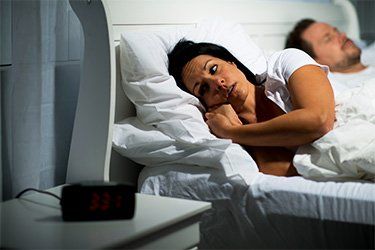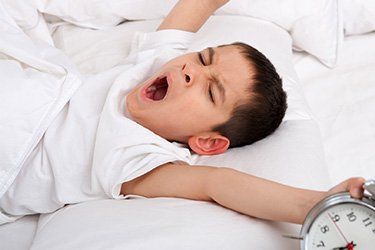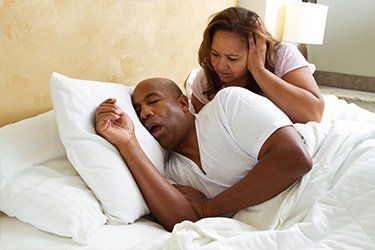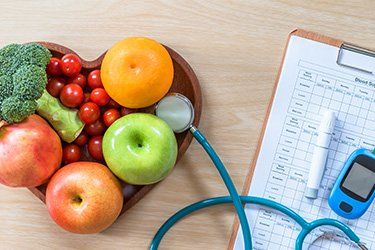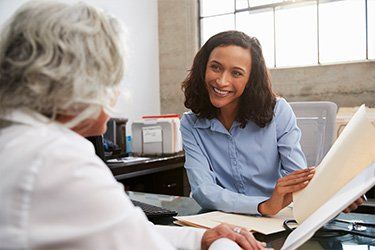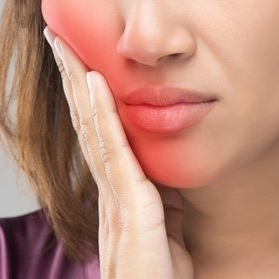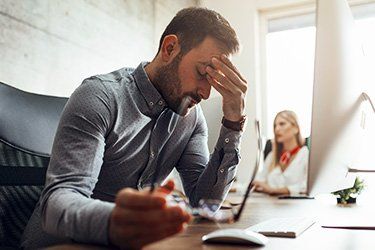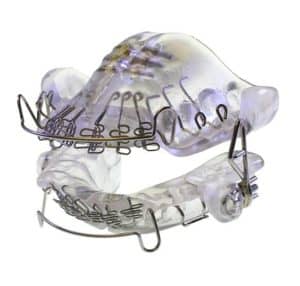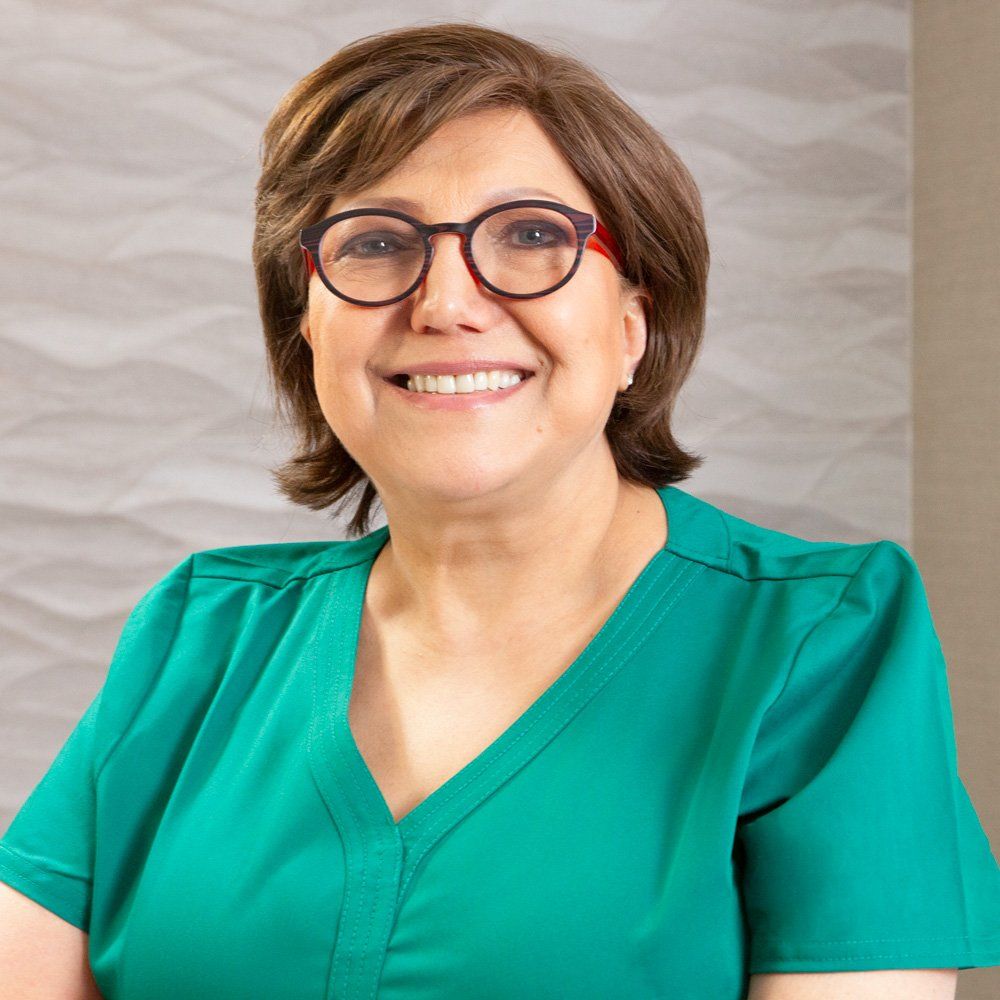About Adult Sleep Apnea
Sleep apnea is a serious disorder wherein the individual’s airway closes during sleep. This occurs because the tongue, which is relaxed, falls back against the throat and prevents the person from breathing. When oxygen levels drop, the brain rouses the person to resume breathing. For an individual with moderate to severe sleep apnea, this can occur up to 30 times or more per hour.
A person suffering from sleep apnea may dismiss the snoring, gasping and sleep interruption as an annoyance and nothing more. It would be unfortunate if they did because the effects of sleep apnea are vastly more far-reaching. Sleep apnea left untreated not only puts one’s health at risk, it can be fatal.
Health Risks from Untreated Sleep Apnea
Adult Sleep Apnea causes more serious health concerns than simply being tired or snoring. The constant stress of choking and waking along with the lowered blood oxygen level creates additional stress throughout your body.
If left untreated, the side effects of this constant stress on your body put at a higher rusk for dangerous health conditions like:
a
- High blood pressure
- Type 2 diabetes
- Increased blood sugar
- Increased cholesterol levels
- Stroke
- Heart attack
- Heart failure
- Heart disease
- Liver problems
Untreated sleep apnea can negatively affect your health to such a degree that it decreases your lifespan. In some cases, people with obstructive sleep apnea have even died due to the above medical conditions. (Find out more about sleep apnea and its health risks .)
How Can We Help You?
Symptoms of Sleep Apnea
The first step to getting treatment for your sleep apnea is to learn what symptoms you need to look out for. The most common sleep apnea symptoms are:
- Loud snoring
- Waking up gasping for air or choking
- Having headaches in the morning
- Difficulty concentrating during the day
- Excessive daytime sleepiness or exhaustion
- Dry mouth or sore throat in the morning
- Unexplained changes in mood, like depression or anxiety
- Sudden short temper or irritability
- Unusually low sex drive
- Difficulty getting to sleep and staying asleep
- TMJ disorders (pain in the joint that connects your lower jaw to your face)
If you are experiencing any of these symptoms, you can take our online assessment to help you determine if you might have sleep apnea.
Obstructive Sleep Apnea
There are three types of sleep apnea in adults. The first type is called obstructive sleep apnea (OSA). This type happens when something physically blocks your airway when you’re asleep.
People with obstructive sleep apnea wake up with a choke or gasp because their body is suffocating. Even though this can happen dozens of times per hour, most people fall back asleep without remembering that they woke up in the first place. This prevents you from getting the deep, restful sleep your body needs each night.
Causes of Obstructive Sleep Apnea
The key factor in obstructive sleep apnea is that something has to
obstruct
the free flow of air into your body. Most adult airways are blocked due to:
- Weak muscles in the throat
- A relaxed tongue falling back into your airway
- Enlarged tonsils or adenoids
- Underdeveloped mandible (lower jaw)
- Smaller airway due to the size and position of your hard palate
Central Sleep Apnea
The second type of sleep apnea is called central sleep apnea (CSA) because it is caused by your central nervous system. Your brain sends signals to your respiratory muscles to keep you breathing without you even having to think about it. But sometimes the signals are ignored (or don’t get sent at all). When that happens, you stop breathing. This can happen all throughout the night and interrupt your sleep as you keep waking up to breathe.
Causes of Central Sleep Apnea
There are two different categories of central sleep apnea (CSA) depending on its cause. The first is hypoventilation, which comes from the Greek word hupo (meaning “under”) and the Latin word ventus (meaning “wind”). Hypoventilation, then, is when you breathe at an abnormally slow rate.
Hypoventilation type CSA can be caused by:
- Medical conditions that affect the brainstem (brain infection, stroke, tumor, trauma, etc.)
- Narcotic medicines, such as opioids, which lower your brain’s ability to send the signals that control your breathing
- Neuromuscular diseases, such as amyotrophic lateral sclerosis (ALS) or multiple sclerosis (MS). These conditions cause muscle weakness including your respiratory muscles.
The second category of CSA is hyperventilation, which comes from the Greek word huper (meaning “over, beyond”) and the Latin word ventus (meaning “wind”). Hyperventilation, then, is when you breathe at an abnormally fast rate.
Hyperventilation type CSA can be caused by:
- Cheyne-Stokes Breathing, which is a distinct pattern of breathing commonly found in people with heart conditions (like heart failure and atrial fibrillation) that leads to CSA.
Altitude-Induced Periodic Breathing, which can happen after you ascend to an altitude above 8,000 feet where the air has a lower concentration of oxygen (such as on a hike). This causes you to breathe harder and can lead to CSA when you sleep.
Complex Sleep Apnea
Some adults may develop complex sleep apnea (also known as
treatment-emergent central sleep apnea) while using a CPAP machine to treat their obstructive sleep apnea. The exact causes of complex sleep apnea are not known
What Increases Your Risk of Developing Sleep Apnea?
In addition to the physical obstructions listed above, there are certain factors that can increase your risk of developing obstructive sleep apnea. These factors include:
How Sleep Apnea Is Diagnosed
Your doctor or dentist can evaluate your symptoms to determine if you likely have sleep apnea. It is especially helpful if you share a bed with a spouse who can offer information about your sleep habits, of which you may not be aware.
If your doctor suspects sleep apnea, they may refer you to see a sleep specialist at a sleep disorder center for more thorough evaluation. This may require you to stay overnight at the sleep center for monitoring of your breathing and other body functions during sleep.
Treatments for Adult Sleep Apnea
There are a wide variety of treatments available for adults who are suffering from obstructive sleep apnea. The best treatment for you will depend on your overall health, your comfort level, and the severity of your sleep apnea symptoms.
The most common treatments for obstructive sleep apnea include:
Is There a Better Way to Treat Obstructive Sleep Apnea Syndrome?
If you are struggling to breathe at night, you would be very wise to seek a solution that resolves the fundamental cause of your apnea, which is the collapse of your airway during sleep. Current treatments, such as the CPAP device and routine oral appliances, do help some people get more air and cope with the problem. But none of the standard treatments for sleep apnea have offered a non-invasive method of actually changing the structure of the airway—not until the Vivos Biomimetic Oral Appliance arrived on the market.
Dr. Maryam Seifi at Breath of Life Dental (BOLD) has been helping adults with sleep apnea in Maryland achieve better quality sleep and better overall health for many years now. She does this using the revolutionary Vivos system of oral appliance therapy.
Now you have a choice in your sleep apnea treatment. In the past, your only options to handle your sleep apnea were to endure the discomfort of a CPAP machine or deal with an invasive surgical procedure. Today, thanks to modern science, you can correct the underlying causes of your sleep apnea with a simple oral appliance.
Dr. Seifi has seen fantastic results in patients who use oral appliance therapy to treat their adult sleep apnea. And the best part is that once you finish your treatment with the Vivos system, you will no longer have to use the oral appliance to get a good night’s sleep! This is a permanent, long-term solution to adult sleep apnea that will enable you to get the deep, restful sleep you need for a long and healthy life.
Benefits of Using the Vivos Oral Appliance
When you wear your Vivos oral appliance as directed, you can handle the underlying causes of your sleep apnea in a way that offers these amazing benefits:
- All-natural pain relief
- No medication required
- Comfortable and discreet appliance
- Easy to use and keep clean
- Nonsurgical treatment
- No noise disturbing your sleep
- Permanent, life-changing results
- Improved quality of sleep
- FDA approved treatment
If you follow the sleep apnea treatment plan as laid out by Dr. Maryam Seifi, you can see results in about 12-24 months on average. Once you are finished with your treatment, you will no longer need to wear your Vivos oral appliance.
How Can the Vivos Appliance Help You?
Find out more about the Vivos appliance available at Breath of Life Dental in Bethesda, Maryland. Attend a free educational seminar or request a consultation with Dr. Maryam Seifi, a diplomate of the American Sleep and Breathing Academy.
To attend a free seminar or schedule a consultation, call (301) 818-2653 or submit an online request.

